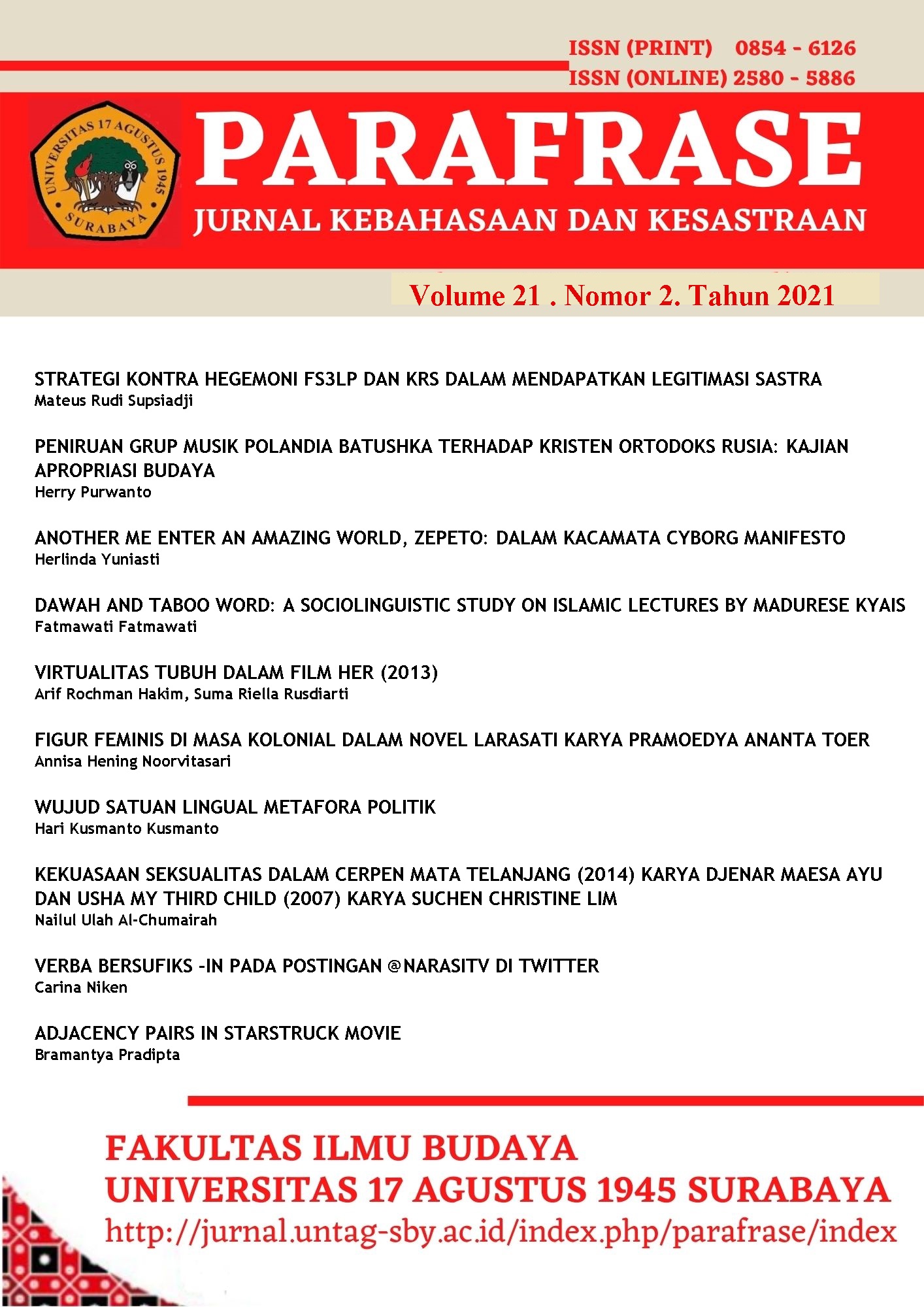VERBA BERSUFIKS –IN PADA POSTINGAN @NARASITV DI TWITTER
Abstract
Abstrak. Ada beragam penggunaan bahasa dalam media sosial twitter. Bentuk keberagaman tersebut berupa sufiks-in pembentuk verba. Penelitian ini bertujuan untuk medeskripsikan pembentukan verba bersufiks –in pada kata dasar dan kata turunan. Selain itu, penelitian ini juga menjelaskan bentuk dan fungsi dari verba bersufiks –in. Jenis penelitian ini menggunakan metode desktiptif kualitatif. Teknik pengumpulan data menggunakan teknik simak dan catat. Teknik analisis data menggunakan metode agih dengan teknik bagi unsur langsung. Teknik lanjutan yang digunakan adalah teknik ubah ujud yang parafrasal. Hasil penelitian ini menunjukkan bahwa kata dasar berbentuk verba yang tidak mengalami perubahan kelas kata, kata dasar nomina yang berubah menjadi verba, dan kata dasar adjektiva yang berubah menjadi verba. Selain itu, kata turunan bersufiks –in meliputi bentuk verba aktif, bentuk verba pasif, dan 1 verba kata tanya. Kata kunci: sufiks –in, verba, twitter Abstract. There are various uses of language in Twitter social media. The form of diversity is in the form of a verb-forming suffix. This study aims to describe the formation of verbs with –in suffixes on basic words and derivative words. In addition, this study also explains the form and function of verbs with the suffix –in. This type of research uses a qualitative descriptive method. Data collection techniques using listening and note-taking techniques. The data analysis technique used a morphological approach, namely affixation. The results of this study indicate that the root word is in the form of a verb that does not change the word class, the noun root word that turns into a verb, and the basic adjective that turns into a verb. In addition, the derivative words with the -in suffix include active verb forms, passive verb forms, and 1 question verb. Keywords: suffix –in, verb, twitterDownloads
Authors publishing in the Journal will be asked to sign a Copyright Assignment Form. In signing the form, it is assumed that authors have obtained permission to use any copyrighted or previously published material. All authors must read and agree to the conditions outlined in the form, and must sign the form or agree that the corresponding author can sign on their behalf. Articles cannot be published until a signed form has been received.It is a condition of publication that authors assign copyright or license the publication rights in their articles, including abstracts, to email jurnalparafrase@untag-sby.ac.id. . This enables us to ensure full copyright protection and to disseminate the article, and of course the Journal to the widest possible readership in print and electronic formats as appropriate.
















